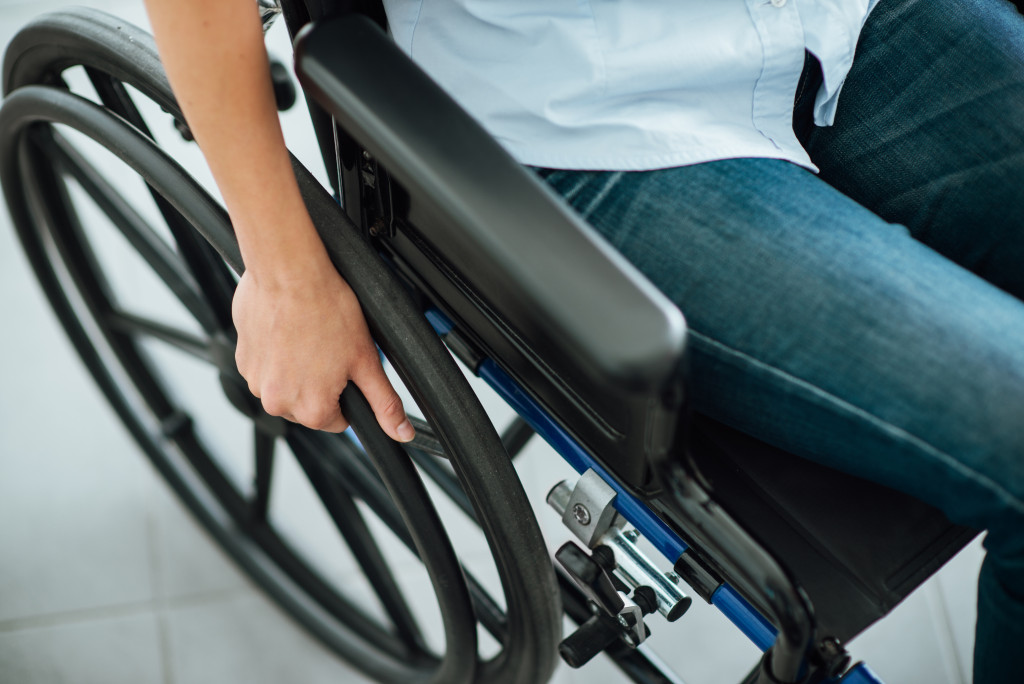Thanks to assistive devices and mobility aids, people who have mobility issues, either temporary or long-term, have been given the ability to roam freely again. There are a lot of available devices and gadgets that can be had by anyone who has mobility issues — may it be caused by arthritis, developmental disabilities, an injury caused by an accident, or by old age. These mobility aids not only reduce pain and provide ease of movement, but they also boost a person’s confidence and improve their self-esteem.
Most common mobility aids such as walking sticks and canes, crutches, walkers, wheelchairs, and scooters, allow people to get around with ease, and with greater efficiency, too. They can perform tasks such as cooking, doing the laundry, or picking some stuff from the grocery. And they can even go on a holiday because they can roam freely like anybody else. In other words, mobility aids provide equity for people with disabilities because these enable them to have access to education, work, and social life.
Depending on the need or injury, here are the five most common types of assistive devices and mobility aids:
1. Wheelchairs
People with mobility issues commonly use wheelchairs to get out and about. They are most ideal for people with severe disabilities or those who are not supposed to put weight on their lower limbs. Wheelchairs are either propelled by the user, pushed by someone, or electrically powered. A more advanced model, which can be propelled using neural impulses, was designed in 2016.
When choosing a wheelchair, however, it is important to consider the physical capabilities of the user. It also helps if you consider the terrain of the area where the wheelchair will be used.
2. Scooters
Typically battery-powered, scooters are ideal for those who lack the upper body strength or the flexibility to use a manual wheelchair. Similar to a wheelchair, scooters have a seat set on top of either three, four, or five wheels, have footplates, and have steering wheels used for maneuvering. They offer more independence for users because they no longer need someone to push them whenever they want to enjoy an afternoon in the park or go to the grocery. These mobility scooters are also available at any wheelchair store. Training is usually available for those who want to use a mobility scooter for the first time.
3. Walking Canes

Walking canes are ideal for people who experience joint pains due to an illness, have suffered a lower limb injury, or have problems with their balance. Canes support the body’s weight and transfer the load from the legs to the upper body.
There are three common types of canes:
White canes — longer and thinner than traditional canes–are used by the visually impaired;
Quad canes — have four feet that provide greater stability; and
Forearm canes — due to forearm support, allow greater weight to be distributed from the wrist to the arm.
4. Crutches
Either used singly or in pairs, crutches help transfer weight from one’s legs to the upper body. They are typically used by people who have short-term injuries or have permanent disabilities. They offer extra support for people who can stand and walk for longer periods of time, but experience pain or tiredness after a lot of exertion.
The three most common types of crutches are:
Underarm crutches — also known as axillary, it functions by placing one part of the crutch against the rib cage under the armpits;
Forearm crutches — this type involves placing the arm into a cuff and holding a hand grip
Platform crutches — the forearm rests on a horizontal platform while the hand holds a grip
5. Walkers
Made up of a metal framework with four legs, walkers are very stable walking aids that provide the users with stability and support. The users lift the walker and place it in front of them, step forward to meet it, then repeat the process. There are walkers that have wheels or glides, which allow users to slide the walker instead of lifting it.
The following are other types of walkers:
Rollator — this type of walker has four wheels, handlebars, and a seat; it’s also safe because it has hand breaks;
Knee Walker — this walker has wheels, too, and allows users to place their knees on a padded cushion while they propel forward using their strong leg; and
Walker-cane Hybrid — this device is a cross between a cane and a walker; has two legs instead of a full frame, and can be used with one or both hands.
Mobility aids not only provide ease of movement for those who need them. They also improve the mental and psychological well-being of their users. Through these assistive devices, people with disabilities and injuries can go about their daily lives, just like an able-bodied person.




